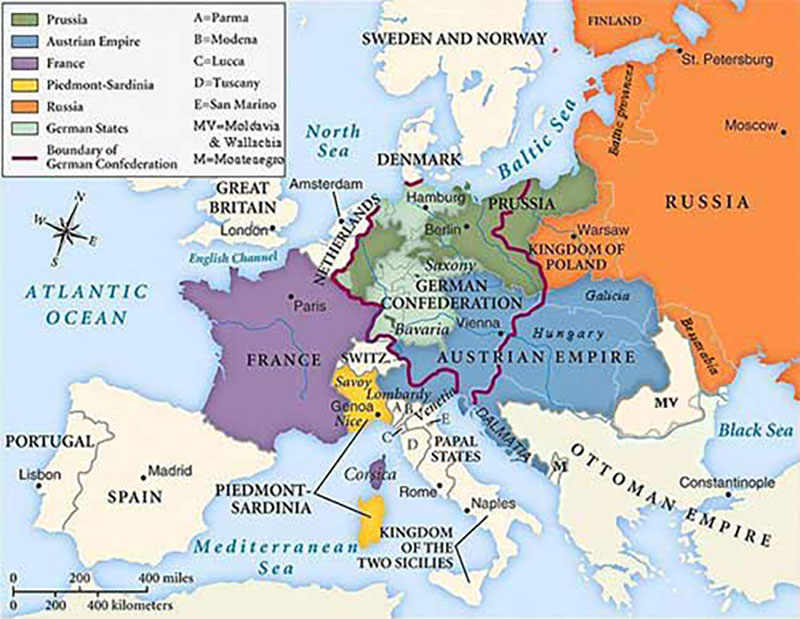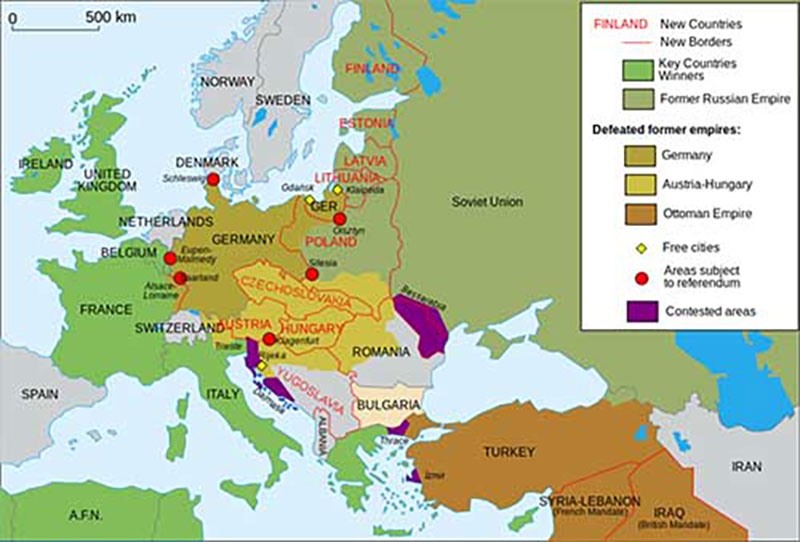by Jan Raska, PhD, Historian
(Updated October 23, 2020)
Introduction
How do I find a passenger list? Is there a ledger? What if my ancestor came from a country that no longer exists? While the Scotiabank Family History Centre at the Canadian Museum of Immigration at Pier 21 does not hold copies of all documentation pertaining to immigrant arrival, it has access to a large number of passenger lists, ship manifests, immigration records on microfilm, and information on all ports of entry into Canada. There remain some misconceptions about the nature of these materials. One widespread public misconception is that the museum maintains a comprehensive book of names and signatures of every person who entered Canada through a port of entry. In the past, ship manifests and immigration paperwork were kept in large ledger books, which later led to the false belief that a substantial book of immigrant names and signatures existed. Today, Library and Archives Canada (LAC) holds immigration records up to 1935 for immigrant arrivals at land and ocean ports of entry. However, there are few comprehensive nominal lists of immigrant arrivals to Canada before 1865.
Evolution of Official Records of Immigration Over Time
From 1865 until the First World War, passenger lists were the official record of immigration. In 1908, border entry lists were first used as official documentation of immigration. As such, no immigrant applications, forms, or files exist. From 1919 to 1924, Canadian immigration officials used an individual form instead of passenger lists or port of entry lists. Form 30 replaced land entry lists and Form 30A was used for ocean arrivals. However, in 1925 the passenger lists and border entry lists were again used to account for immigrant arrivals. According to LAC, the passenger lists and border entry lists contain an individual’s name, age, country of origin, occupation, and intended destination in Canada. While Canadian immigration officials counted immigrant arrivals, they did not keep records of individuals who emigrated from Canada. Currently, Department of Immigration, Refugees and Citizenship Canada retains post-1935 immigration records. Individuals must contact them directly to request a copy of their own or another person’s immigration record.[1]
Historical and Geneological Sources to Conduct Research on Immigrant Arrivals
Historians and genealogists depend on a number of sources to conduct research on immigrant arrivals, including archival sources, media, published community histories, works on immigration policy and practice, and immigration statistics. For the latter, individuals can consult Statistics Canada’s Canada Year Book Historical Collection, Canadian Censuses, and Citizenship and Immigration Canada's annual Immigration Statistics (1966-1996).[2] The Canada Year Books offer statistical tabulations including the number of immigrant arrivals based on racial and national origins or by port of entry. This collection also contains limited information on the number of deportations by racial and national origin or by port of entry. The Canadian Censuses provide individuals with information on the country’s population including immigration, place of birth, ethnocultural origin, religious denomination, gender, age, and occupation. The annual Immigration Statistics consists of departmental statistics for three successive postwar ministries responsible for the immigration portfolio: Manpower and Immigration (1966-76) Canada, Employment and Immigration Canada (1977-1991), and Citizenship and Immigration Canada(1992-1996).[3] More recent statistics can be found on Immigration, Refugee and Citizenship Canada's Statistics and Open Data website.[4] These sources are for statistical purposes only and do not include personal information such as individual names.
In some cases, individuals arrived from states which did not exist at the time of their birth or were born in countries that later ceased to exist. This poses a problem for researchers and genealogists, who attempt to locate immigration records, statistical information, and travel documentation in order to establish or reconcile family histories. The use of these historical immigration statistics poses certain research difficulties. Since Confederation, federal officials have tried to track the number of immigrants who have arrived in Canada. Even as annual Canadian immigration totals are available, however, including by port of entry, federal immigration officials have yet to tabulate the entry of immigrants by ethnoracial identity, country of citizenship, or country of last permanent residence for each port of entry into the country. Until now, the Canadian government has tallied the total number of immigrants by citizenship, last permanent residence, and ethnoracial or national association in a given year, but not by port of entry. For example, museum staff members could be asked ‘how many Italians came through Pier 21 in a specific year?’ It is impossible to answer this question. We can refer the public to broader immigration statistics including the Canada Year Books and departmental Immigration Statistics. However, even these sources are problematic as shown below.
Immigration Statistics Reflect Ideological and Political Preferences of Successive Canadian Governments
As Canadian governments change over time, so do ideological and political preferences for the immigration portfolio and how immigration to Canada is tabulated. At the height of Canadian immigration in the early twentieth century, in which 400,870 immigrants arrived in Canada in 1913, the immigration branch was under the auspices of the Department of the Interior. If we use the Canada Year Book for that year as an example of how statistics concerning immigrants are handled, we can see that immigrants are categorized under “Arrivals at Inland and Ocean Ports in Canada in fiscal years 1901-1914” and further classified by “nationalities.”
Absorption, Conflation, Misrepresentation, or Omission of Ethnic Groups from Official Statistics
At the time, some European ethnic groups from multinational empires were not represented in Canadian immigration statistics. For example, Bosnians, Croats, Czechs, Slovaks, and Slovenes, were simply counted as “Austrians,” “Hungarians,” or as “Other nationalities.” However, other ethnic groups without their own nation state were tabulated. The 1913 Canada Year Book counted Jewish immigrants from the Austro-Hungarian, German, and Russian Empires as “Hebrew, Austrian,” “Hebrew, German,” and “Hebrew, Russian.” Ukrainian immigrants to Canada were tallied as “Bukowinian” (Austria-Hungary), “Galician” (Austria-Hungary), and “Russian” (Russian Empire) representing the territories they came from within Austria-Hungary and Russia. Polish immigrants, whose homeland was partitioned by the three aforementioned empires in the late eighteenth century, were also counted by Canadian immigration officials as “Polish, Austrian,” “Polish, German,” and “Polish, Russian.”[5]
A Cautionary Tale: Issues with the Use of Past Immigration Statistics
Immigration statistics have to be used with caution. This is also the case for past Canadian Censuses. Much like the Canada Year Books, the Canadian Censuses prior to the interwar period were also fraught with issues. As members of diverse ethnocultural groups, individuals are often inadequately reflected in these statistics. For example, Canadian Census figures prior to 1920 labelled Slovak or Czech arrivals as “Austro-Hungarians,” therefore entirely removing their own ethnic self-identification. With the dissolution of the Dual Monarchy of Austria-Hungary and the emergence of Czecho-Slovakia after the First World War, the Dominion Bureau of Statistics classified these same individuals as “Czecho-Slovaks” in an attempt to record their ethnic origins.[6] However, this term only served to combine two ethnic groups, who were actually distinct from one another.
In the 1920s, Canadian officials recorded immigrant entry statistics by classifications including “racial” origin, and “nationalities.” “Origins” was also used in the early postwar period to tabulate ethnoracial identity. After 1945, successive federal governments streamlined this process and concentrated their efforts on previous citizenship and permanent residency, among other topics. At the height of immigration through Pier 21 during the late 1940s and early 1950s, immigrants were counted in the Canada Year Books, for example, by “Immigrant Admissions, Country of Last Permanent Residence,” “Birthplaces of Immigrant Arrivals,” “Origins of Immigrants Arrivals,” and “Nationalities of Immigrant Arrivals.”[7]
Conclusion
When conducting research on immigrant arrivals, statistics must be used with caution. They offer invaluable information on the historical migration of individuals and families to Canada and their presence in this country. However, they can also skew or mask the actual identities of newcomers and the size of their ethnocultural community in Canada. Ethnocultural and national self-identification is fluid, while international borders continue to evolve over time due to social, economic, political, and environmental concerns. Researchers and genealogists can also look to other sources including the museum’s Canadian Immigration Acts and Legislation resource, the Canadian Historical Association’s Immigration and Ethnicity in Canada Series or (the former) Department of Citizenship and Immigration’s Forging Our Legacy book to help contextualize arrival in a given period.[8]
Maps Indicating the Evolution of European Political
and Territorial Changes, c. 1815-1923:[9]

Credit: International Commission and Association on Nobility

Credit: Fluteflute, Wikipedia
Some notable European political and territorial changes since 1867 :[10]
1871
- North German Federation and south German states unite to form the German Empire.
- Alsace-Lorraine is ceded by France to Germany after the Franco-Prussian War.
1878
- Bosnia and Herzegovina becomes a protectorate of the Dual Monarchy of Austria-Hungary.
- Ottoman Empire concedes territory to Bulgaria and Serbia following the Russo-Turkish War.
1905
- Norway becomes independent from Sweden.
1908
- Dual Monarchy of Austria-Hungary annexes its protectorate, Bosnia-Herzegovina.
1912-13
- Two Balkan Wars force the Ottoman Empire to cede territory. Among other acquisitions, Serbia gains Kosovo, while Greece receives southern Macedonia and territory along the Aegean coastline. Bulgaria also receives a part of the Aegean coastline and Western Thrace. Albania declares its independence.
1917
- Finland declares independence from the Russian Empire.
1918
- With the conclusion of the First World War, the Baltic States (Estonia, Latvia, and Lithuania) declare their independence from the Russian Empire.
- The Kingdom of Slovenes, Croats and Serbs (Yugoslavia in 1929) is formed. Czecho-Slovakia, Hungary and Poland declare their independence.
1919
- In September, the Dual Monarchy of Austria-Hungary is dissolved by the Treaty of Saint-Germain (1919) and the Treaty of Trianon (1920). Parts of its territory are given to Italy, Romania, and the Kingdom of Slovenes, Croats and Serbs. These treaties confirm the territorial borders of Austria, Czecho-Slovakia, Hungary, and Yugoslavia.
- Following the Treaty of Versailles, Germany loses territory as Belgium is awarded Neutral Moresnet and three German-speaking cantons (Eupen, Malmedy, and Sankt Vith). Denmark receives Northern Schleswig. A majority of the Prussian Provinces of Posen and West Prussia, east Upper Silesia, and Soldau are given to Poland. Danzig and Saarland become the jurisdiction of the League of Nations. They are known as the Free City of Danzig and the Territory of the Saar Basin (Saarland).
1922
- As a result of the Anglo-Irish Treaty, the Irish Free State (1922-1937) is established (from the United Kingdom of Great Britain and Ireland) and given full independence over its home affairs and practical independence in matters of foreign policy. Northern Ireland opts out and remains with the newly formed United Kingdom of Great Britain and Northern Ireland.
- In December, the Union of Soviet Socialist Republics (Soviet Union) is formed.
1923
- The Treaty of Lausanne establishes the modern borders of Turkey. As a result of the treaty superseding the Treaty of Sèvres, Greece loses its recent territorial acquisitions. Western Thrace is ceded by Bulgaria to Greece in the Treaty of Neuilly-sur-Seine (1919).
1929
- Vatican City becomes an independent state following the Lateran Treaty with Italy.
1935
- Inhabitants of the League of Nations-created Territory of the Saar Basin (Saarland) vote by plebiscite to rejoin Germany. Berlin subsequently annexes the territory.
1938
- In September, Britain, France, Germany, and Italy sign the Munich Agreement, permitting Berlin to annex the predominantly German-speaking Sudetenland from Czechoslovakia.
1939
- In March, Czecho-Slovakia (renamed after the annexation of the Sudetenland) is occupied by Germany, becoming the Reich Protectorate of Bohemia-Moravia. Slovakia becomes an independent state and wartime German ally.
1945
- After the Second World War, Germanys’ eastern border is moved west to the Oder-Neisse Line, thus dividing the state between American and British Occupation Zones, and the Soviet Occupation Zone.
- The Curzon Line is used to mark Poland’s eastern border.
- Soviet Union annexes the Baltic States of Estonia, Latvia, and Lithuania. The Soviet government also annexes Carpathian Ruthenia from Czechoslovakia, and Bessarabia, Hertza, and Bukovina from Romania. The Soviet Union also incorporates parts of the former East Prussian territory, becoming the Kaliningrad Oblast.
1949
- In May, the Federal Republic of Germany (West Germany) is established from the three Western Allied (American, British, and French) Occupation Zones.
- In October: the German Democratic Republic (East Germany) is established from the Soviet Allied Occupation Zone.
1954
- The Free Territory of Trieste is abolished and its lands distributed between Italy and Yugoslavia.
1957
- Following a plebiscite, Saar is incorporated into the Federal Republic of Germany (West Germany).
1964
- Malta becomes independent from the United Kingdom.
- Library and Archives Canada (hereafter LAC), “Immigration Records: After 1935,” http://www.bac-lac.gc.ca/eng/discover/immigration/immigration-records/pages/introduction.aspx#a.
- See Statistics Canada, “Canada Year Book Historical Collection,” http://www65.statcan.gc.ca/acyb_r003-eng.htm; LAC, “Censuses,” http://www.bac-lac.gc.ca/eng/census/pages/census.aspx; Statistics Canada, “Census Program,” https://www12.statcan.gc.ca/census-recensement/index-eng.cfm; Immigration, Refugees and Citizenship Canada (hereafter IRCC), “Citizenship and Immigration statistics archives (1966-1996),” http://epe.lac-bac.gc.ca/100/202/301/immigration_statistics-ef/index.html. Collection is archived on the LAC website.
- IRCC, “Citizenship and Immigration statistics archives (1966-1996).”
- IRCC, “Statistics and Open Data,” https://www.canada.ca/en/immigration-refugees-citizenship/corporate/reports-statistics/statistics-open-data.html.
- See referenced example, Canada, Census and Statistics Office, Canada Year Book 1913 (Ottawa: King’s Printer, 1914), 106.
- In February 1920, Czecho-Slovakia was officially renamed Czechoslovakia. The hyphen, which represented a federation between the Czech and Slovak nations, was removed with the implementation of a centralized Constitution that promoted a pro-‘Czechoslovak’ civic nationalism.
- See Canada, Department of Trade and Commerce, Canada Year Book, 1952-53 (Ottawa: Queen’s Printer, 1953), 166-170.
- See Lindsay Van Dyk, “Canadian Immigration Acts and Legislation,” Canadian Museum of Immigration at Pier 21, /research/immigration-history/canadian-immigration-acts-and-legislation; Canadian Historical Association, “Immigration and Ethnicity in Canada Series,” https://cha-shc.ca/english/publications/immigration.html; Canada, Department of Citizenship and Immigration, “Forging Our Legacy: Canadian Citizenship and Immigration, 1900-1977,” http://www.cic.gc.ca/English/resources/publications/Legacy/index.asp.
- This list is amended from the following source: Wikipedia, “List of national border changes since World War I,” https://en.wikipedia.org/wiki/List_of_national_border_changes_since_World_War_I. For further reference, see Paul Robert Magocsi, Historical Atlas of Central Europe (Seattle: University of Washington Press, 2002).
- This list is amended from the following source: Wikipedia, “List of national border changes since World War I.” For further reference, see Magocsi, Historical Atlas of Central Europe.
